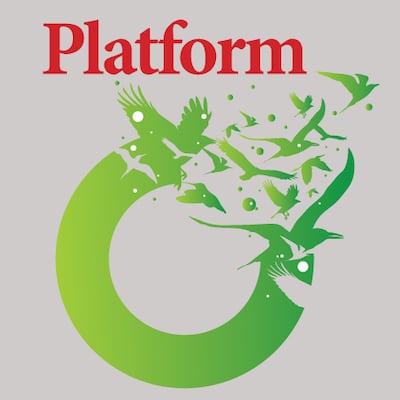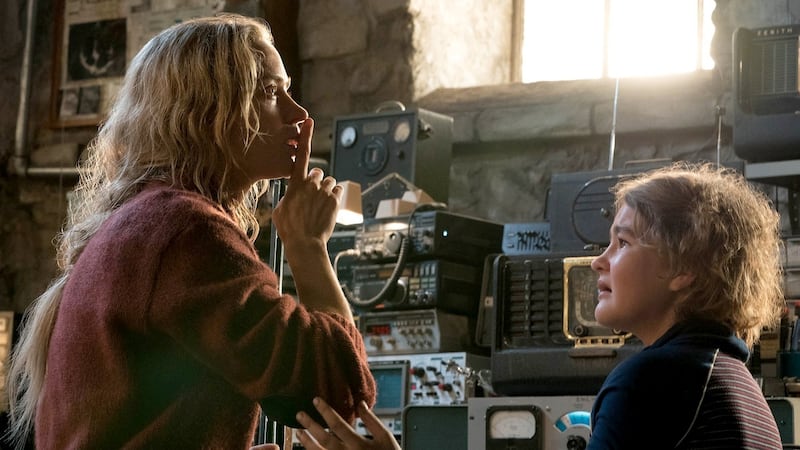The recent film A Quiet Place had reviewers delving for words to describe the film's use of deafness as plot point and, in particular, the role of the cochlear implant-wearing daughter, played by deaf actor Millicent Simmonds. As a film lover and cochlear implant wearer, I approached the film with some trepidation. Too familiar with the lack of representation of deafness onscreen, I was set up to be disappointed.

While the film offered a fair share of thrills in turning the disability trope on its head by allowing the family to use sign language to keep safe, this gave out in the end and mom took out the rifle. It seems there is little new under the Hollywood sun and in fact, the principle pleasure for me was being able to follow all the dialogue as the screening was open captioned (OC).
OC screenings are just one aspect of what is loosely termed accessible cinema, the provision of facilities for audiences with disability. This can refer specifically to the physical facilities of a cinema, such as an accessible building. It encompasses user-friendly booking systems and information, disability equality trained front of house staff, a loop system and a lift (or lifts) by which to access different floors. It can include screening conditions for particular audiences where the lighting remains on or the volume lowered. It also refers to the provision of films with audio description (AD) that recounts the action on screen for audiences who are blind or vision impaired, and open/closed captioning (OC/CC) for deaf/hard of hearing (HOH) audiences.
Sound effects
This is similar to subtitling, but also includes extra information such as sound effects. OC and AD facilities have become more possible since the arrival of digital cinema. Whereas film was formerly screened from reels, digitisation means that the exhibitor (cinema) can avail of audio described and captioned files at no extra cost. The producers’ job is to create these files before the film goes into distribution. The job of the cinema then is to make these formats available at screenings using specific technologies such as headsets for AD and either open captions on the big screen or closed, transmitted to an individual screen.
Sourcing equipment and training staff obviously has financial implications for venues, but for people living with sight or hearing loss, who want to experience and enjoy cinema and other artforms in public places, these technological advancements can provide a lifeline. The need to interact, to share cultural experience, what Barbara Ehrenreich described as the desire for "collective joy", is a human impulse.
I have an acquired hearing loss that progressed over a relatively short time to deafness and then a cochlear implant. During these years, much of what gave me joy such as going to cinema, or attending a gig or theatre, became gradually out of my reach. Despite the best efforts of friends and colleagues, I felt exclusion from cultural life, in particular cinema, which is also my job. Invaluable lifelines came from lipreading classes with Brigid Mac Sweeney and Judith Andrews under the auspices of Deaf Hear. These classes were as much about grappling with vowels as they were about social interaction, often the first casualty of living with hearing loss.
Accessible cultural cinema
Around this time, my employer, the Irish Film Institute (IFI), was carrying out research into the viability of accessible cultural cinema, with the support of the Arts Council and Arts Disability Ireland (ADI). This involved looking into the number of films from the new releases shown at IFI, which would also be available in OC and AD formats. Not all films have accessible files; generally they are titles from bigger studios and significantly, Irish films are comprehensively lacking these facilities.
I was hugely motivated to follow this research and to be instrumental in the introduction of a pilot screening project, now in its third year. My hearing loss coupled with my role as head of education at IFI placed me in a unique position to influence change for deaf/HOH and blind/vision impaired audiences from within. Through this project the IFI programme has become accessible for these audiences, myself included.
Stereotypical representation
While the pilot project at IFI has been welcomed, focus group discussions reveal the complex relationship that can exist between audiences with disability and cinema itself, stemming from long-term exclusion as well as stereotypical representation of disability on screen.
This two-fold connection extends back through cinema history, from its early days as a mechanical wonder, to the golden era of Hollywood through to the blockbuster, CGI and digital exhibition. With each evolution, cinema has maintained its capacity to entertain and engage on a mass scale, yet despite this, attempts to reach audiences with disability have been virtually non-existent until now.

It is something of an irony that when cinema progressed from silents to “talkies” it excluded a large component of the audience who were deaf or hard of hearing. On the screen, deaf and blind characters served as the butt of jokes or else disability afforded a character an underhand nature or special powers.
Using seeing or hearing actors to play deaf or blind characters was – and remains – the norm: we think of Audrey Hepburn as the blind woman in Wait Until Dark whose blindness lends her an ability to "see" crime. Even in a landmark film such as Children of a Lesser God, which featured Oscar-winning actor Marlee Matlin, her character's deafness is still the focus of the narrative itself. In these depictions, cinema, no more than the real world, perceived a model of disability in which the problem lies with the individual rather than society's response.
Gender inequality
In the year when mainstream cinema wrestles with issues of gender inequality, we find ourselves clamouring for broader representation across the board. Recently in this column James Rickard commented on society's need for a new identity, one that acknowledges diversity. Such an identity would have huge relevance for the arts, in terms of both representation and provision of access. For the arts to be accessible, it not only requires removal of barriers, but it also requires recognition by arts providers and practitioners, including filmmakers, that the audience comprises all types of people.
Offering feedback to the IFI project, participants were clear that they wanted “to be able to go and enjoy things as much as everybody else”. They wanted choice, and not to be relegated to one-off shows. For arts organisations this means taking risks on programming and viewing the audience as a whole. Exclusion comes in many forms; if inclusion means being able to sit on the edge of your seat spilling popcorn along with everyone else, then so be it.
We are all the audience.
Open the doors.
PLATFORM SERIES part 2
1) Louise Bruton: The day I started using a wheelchair, a lifetime of self-inflicted pressure lifted
2) Aisling Glynn: There are 847 more accessible taxis in Dublin than west Clare - I just need one
3) Rosaleen McDonagh: Perniciousness of racism and ableism in Ireland still continues
4) Ferdia MacAonghusa: Society thinks disabled people are not humans with rights but problems to be solved
5) Bobbie Hickey: Not getting the points I wanted led to the best year of my life
6) John Cradden: To forge an identity in a hearing world you become 'Deaf' rather than 'deaf'
7) Alicia McGivern: Let's make a reel difference when it comes to accessibility













